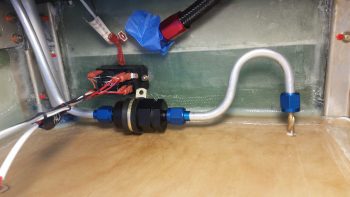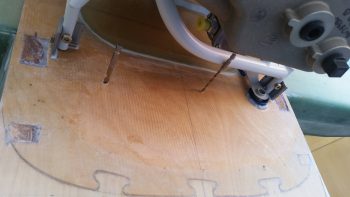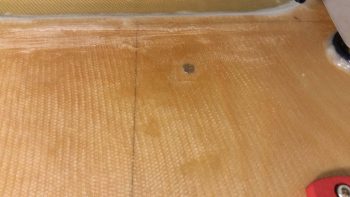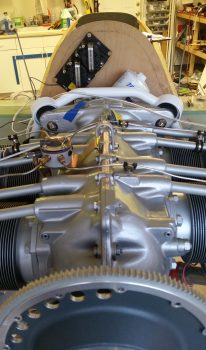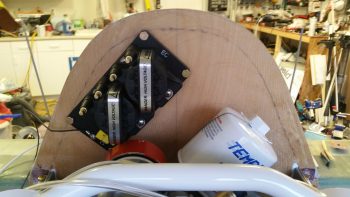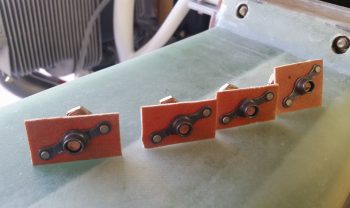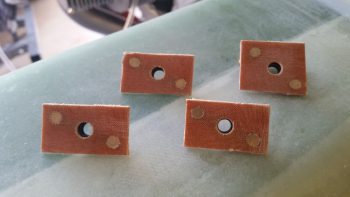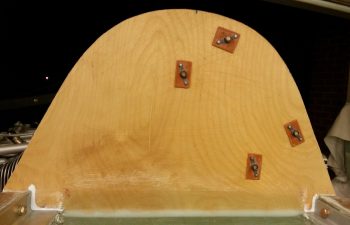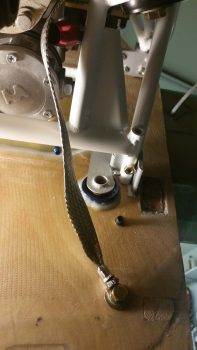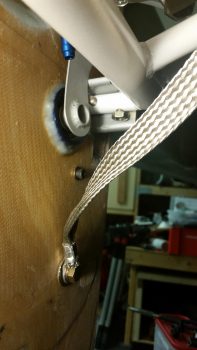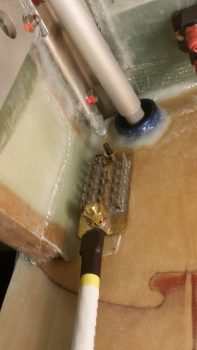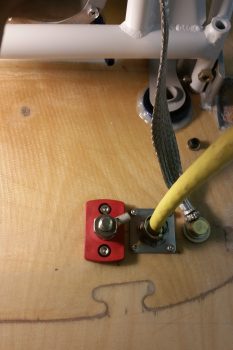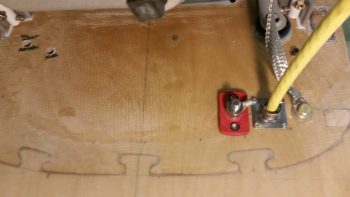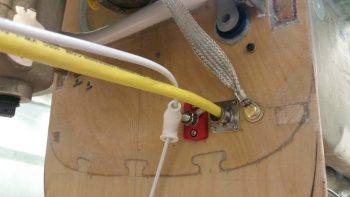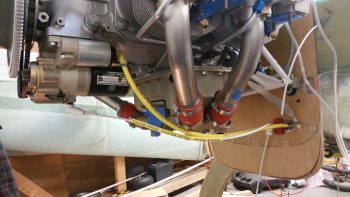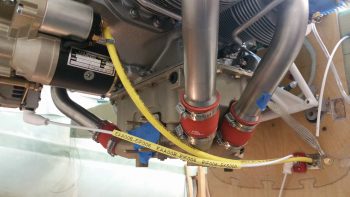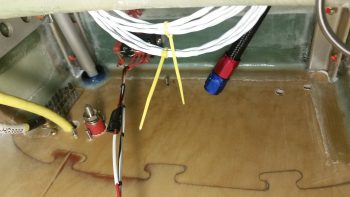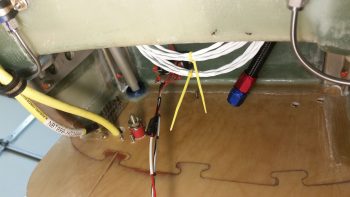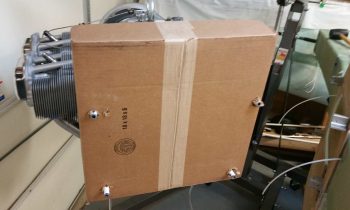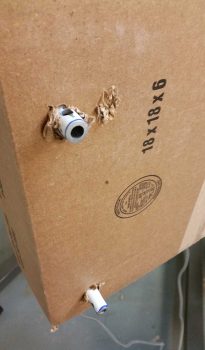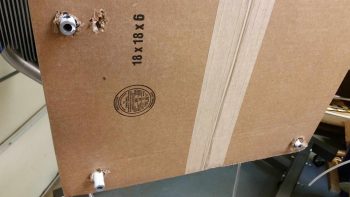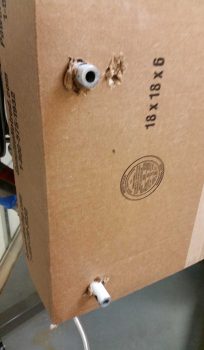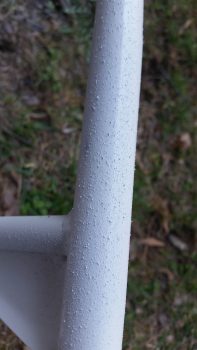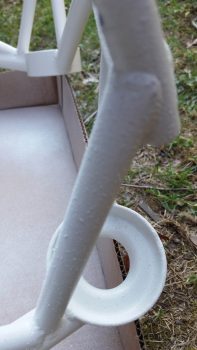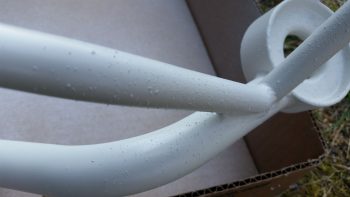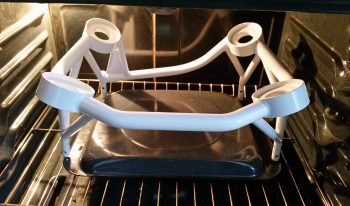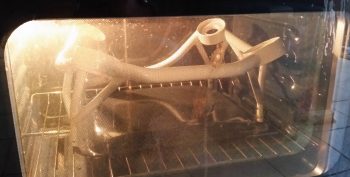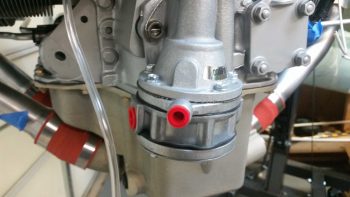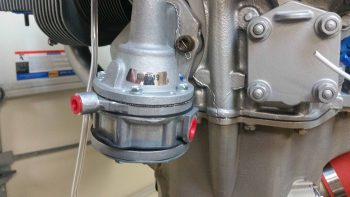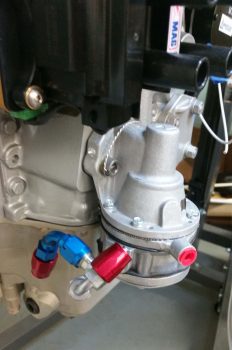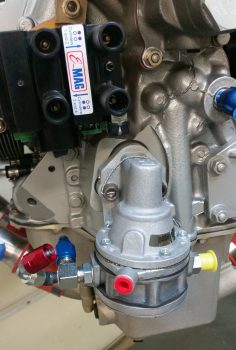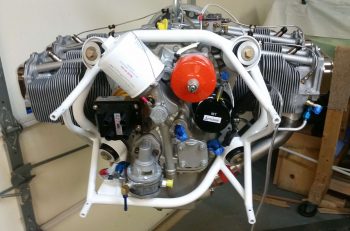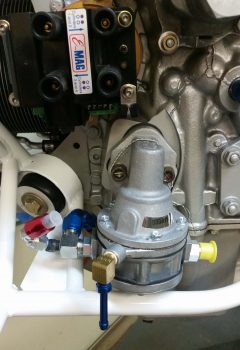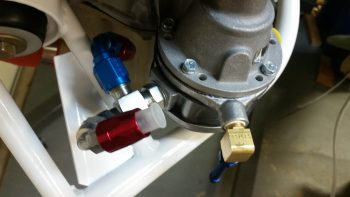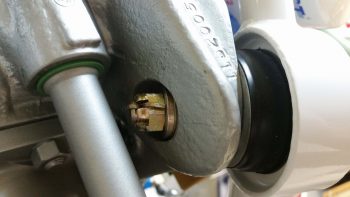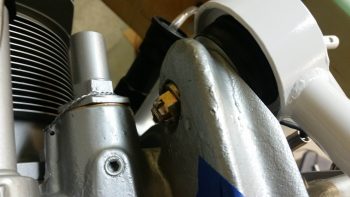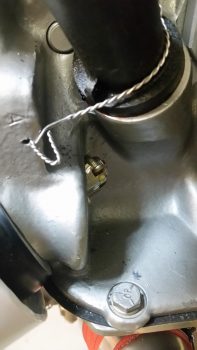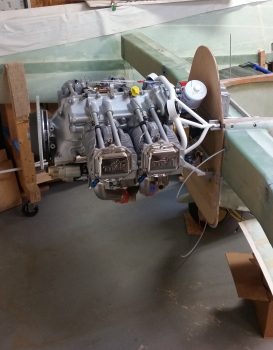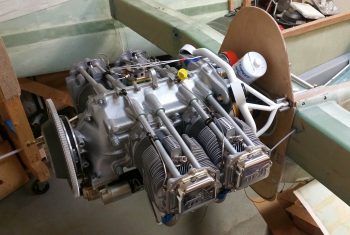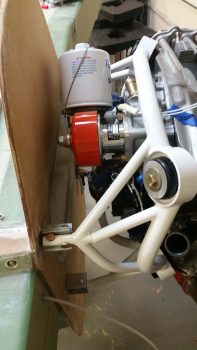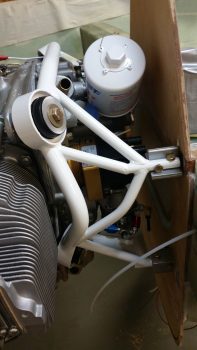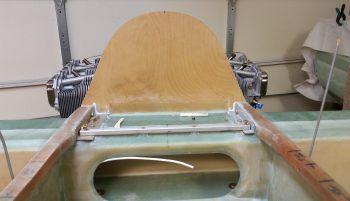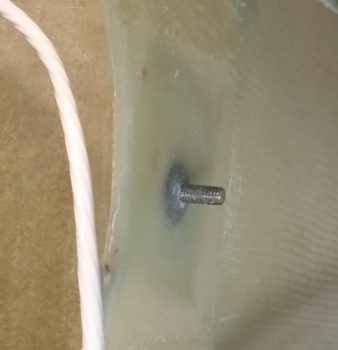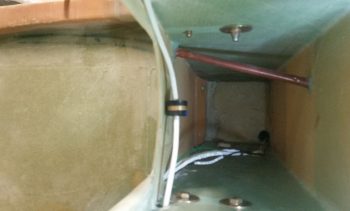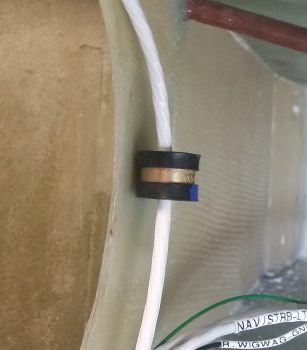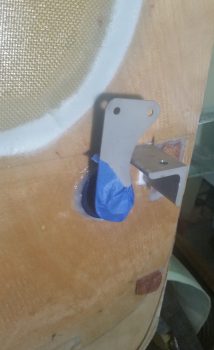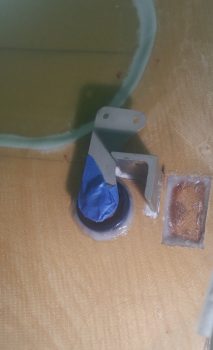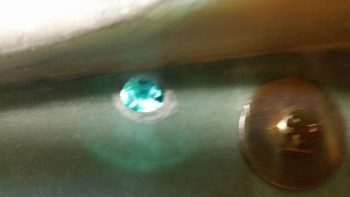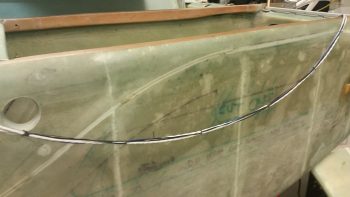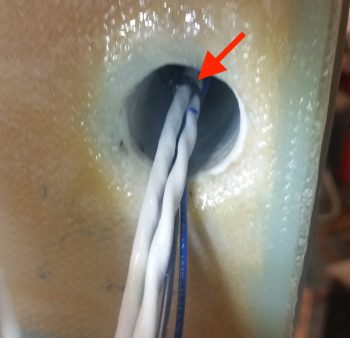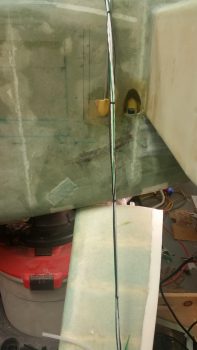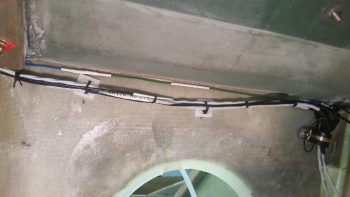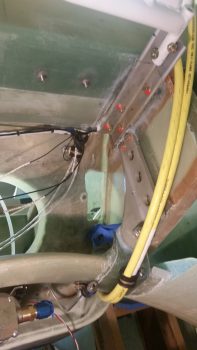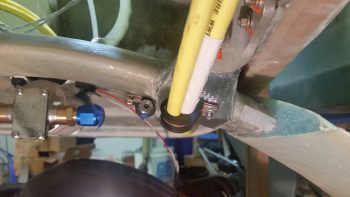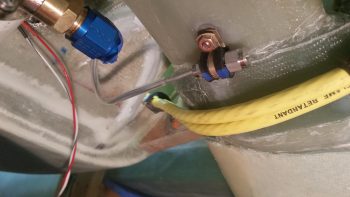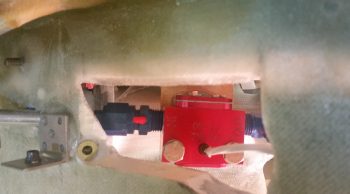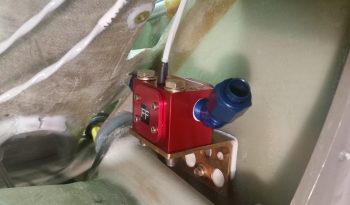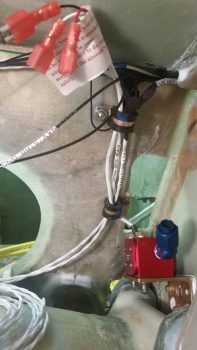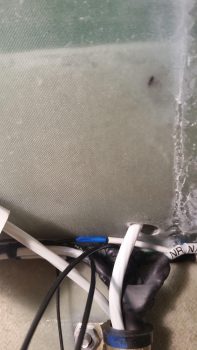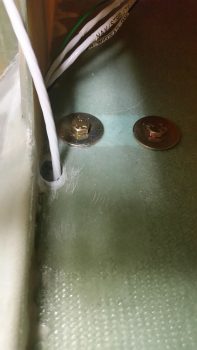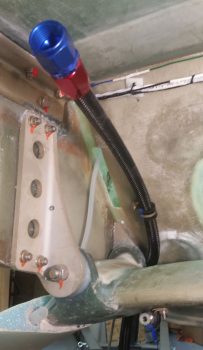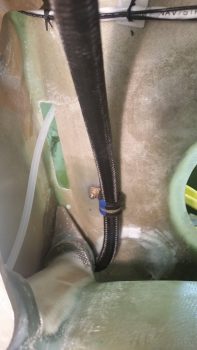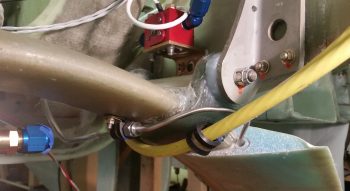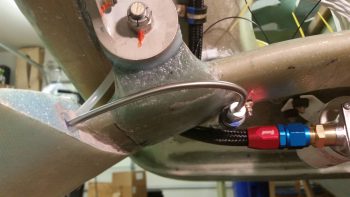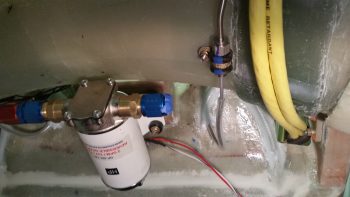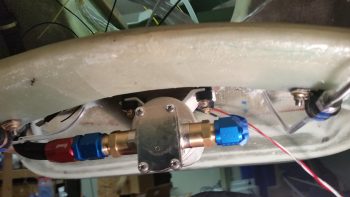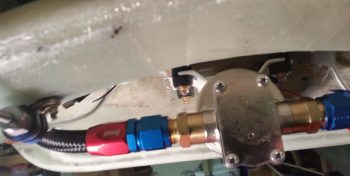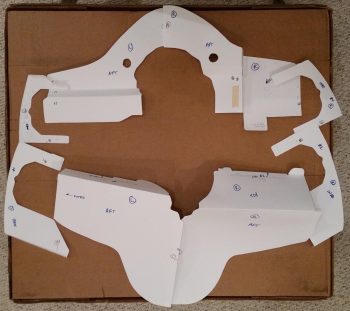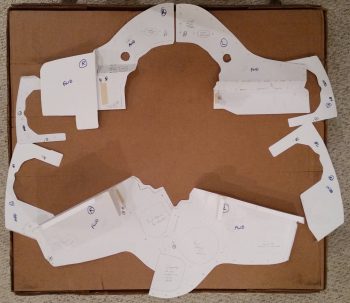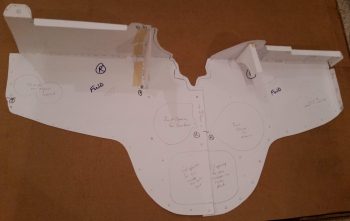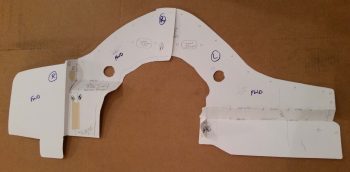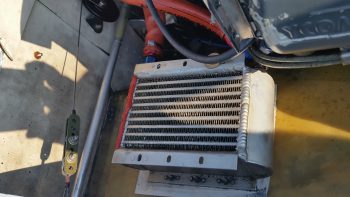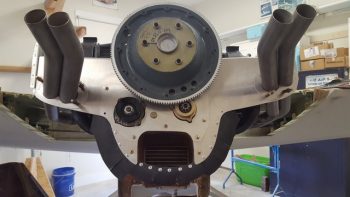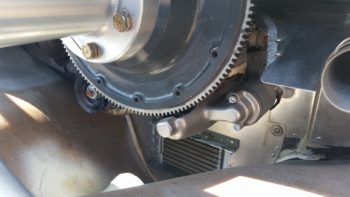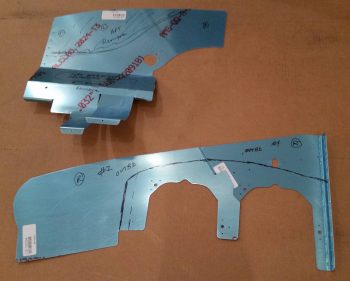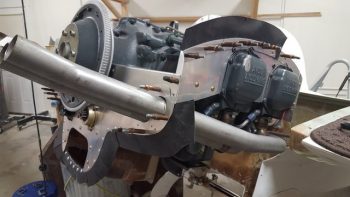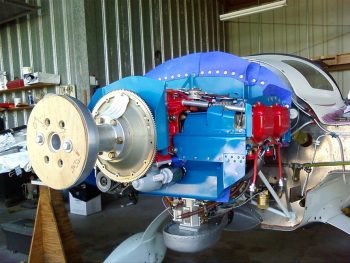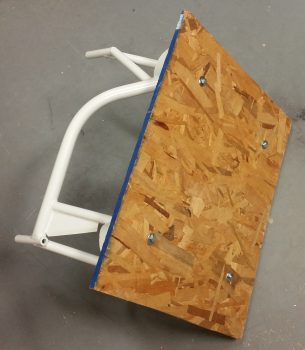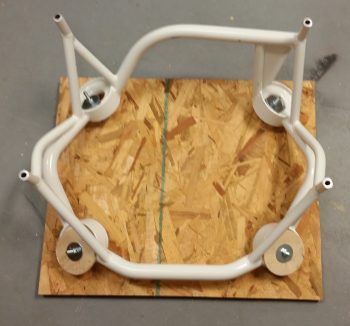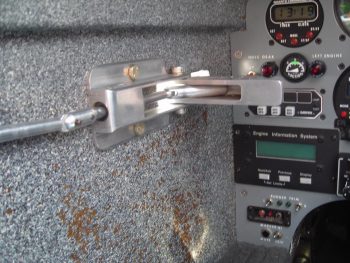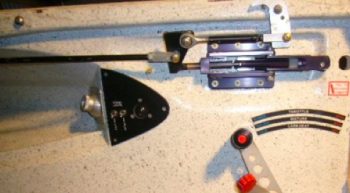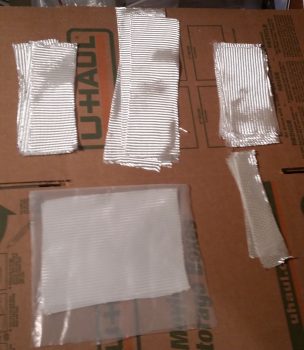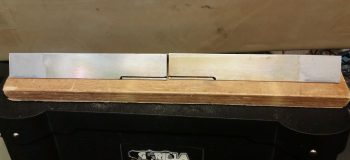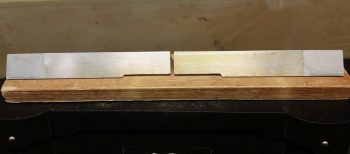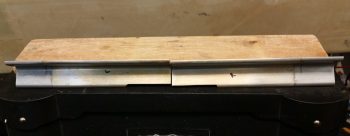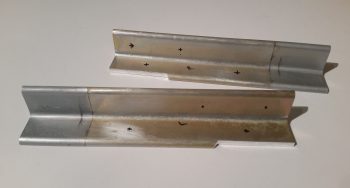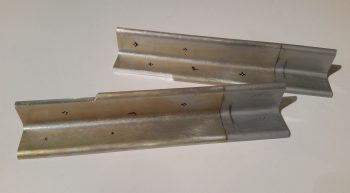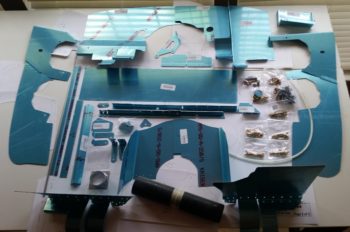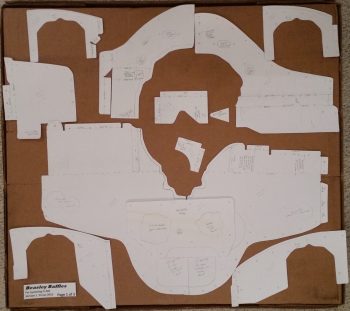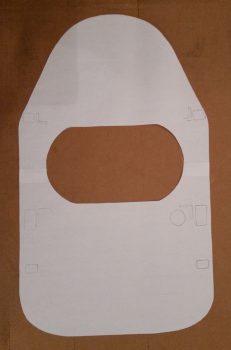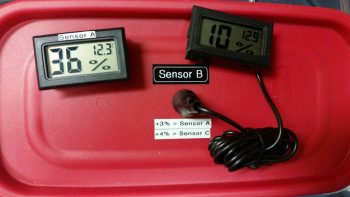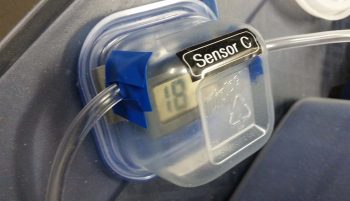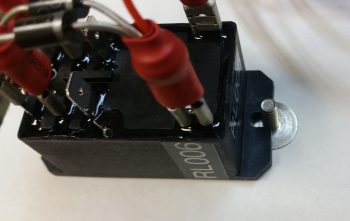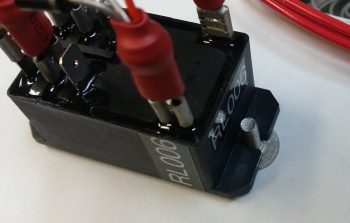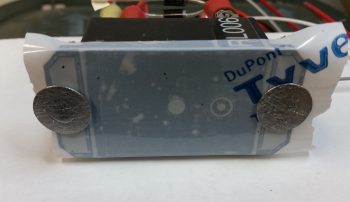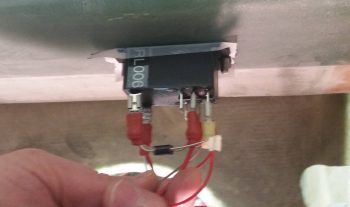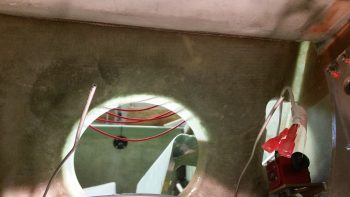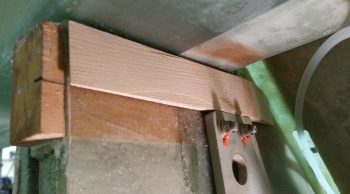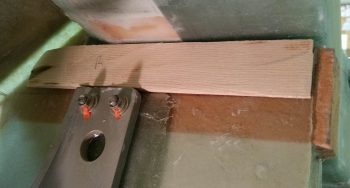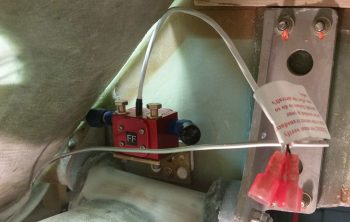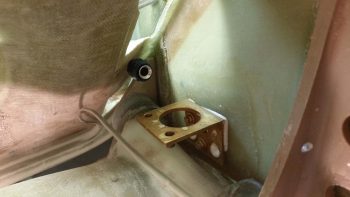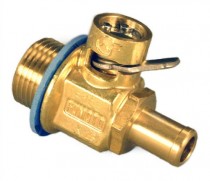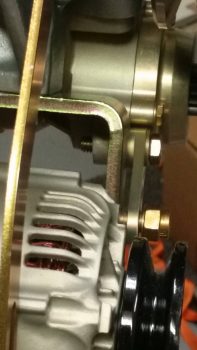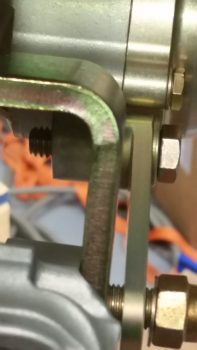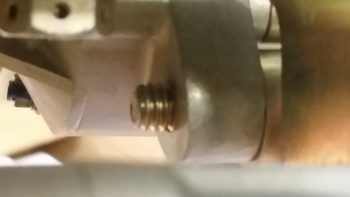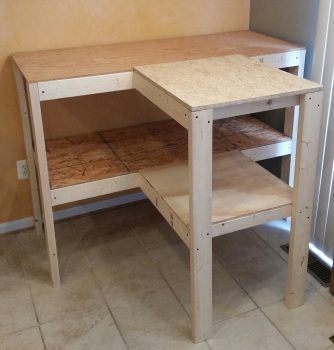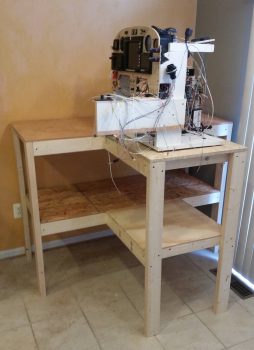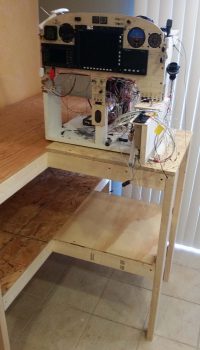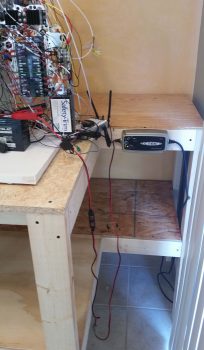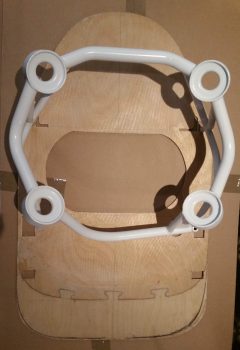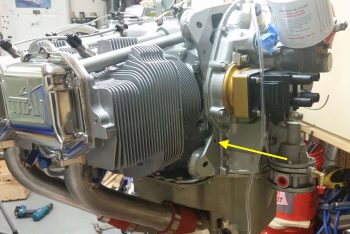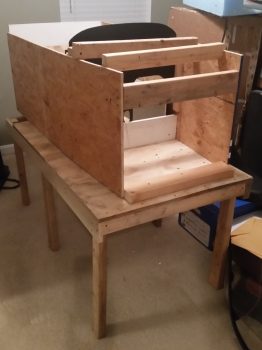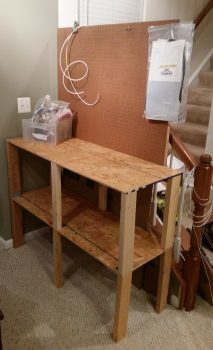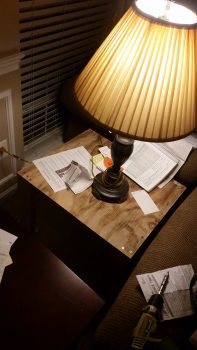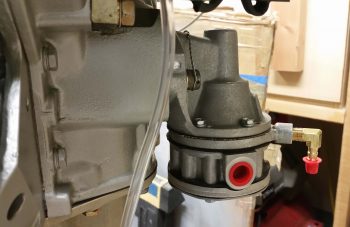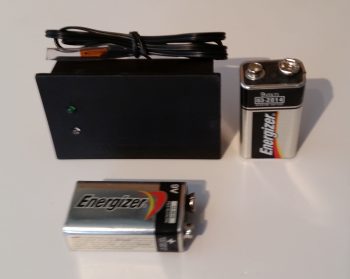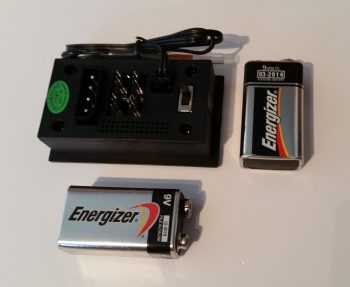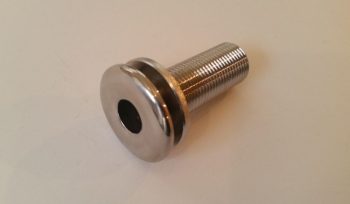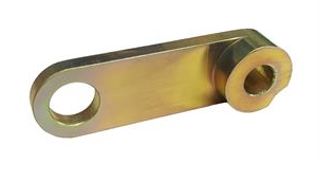Today was all about getting as much of a jump as possible on the firewall configuration to get that stuff knocked out early. I did take about half an hour to clean up all the rough edges on the wheel pants’ tire hole reinforcement layups that I did the other day, and then cut, shaped and sanded the bigger layups I did on the back of each wheel pant tire opening.
After reviewing some info on installing NPT fittings I felt I should do my due diligence and check the torque on the 45° AN6 fitting exiting the FT-60 Red Cube fuel flow meter. It was tight, but I thought it could be tighter. However, if you’ve seen the install manual there is explicit warnings not to over tighten a fitting on account the transducer’s case might actually crack. In the AFP-30 Air Data Computer install manual there’s some literature on the FT-60 that states to torque the fittings to 25 ft-lbs. Since I had a box wrench adapter on a short extension mounted to my torque wrench, I dialed the torque down to 23.5 ft-lbs to ensure I didn’t crack the FT-60 case. Surprisingly, I was able to get one more entire revolution out of the 45° AN6 fitting… with how much pressure I had to exert to get to that 23.5 ft-lbs (again, remember I was using an protruding box wrench adapter on a short extension… both serving to add a mechanical torque advantage), I’m surprised people go further than that to crack these darn things!
Once I got the aft fitting on the FT-60 squared away, I then did some minor tweaking of the fuel filter and lines to get the filter flat again the front face of the firewall. I then marked the position of the Adel clamp hole and the fuel line exit point on the firewall. From inside the hell hole I drilled small holes out using my right angle drill. I then drilled from the aft firewall side coming back into the hell hole. You can see the drill bit in the pic below peaking through the firewall and aligned with the fuel line fitting.
Here’s a shot from the firewall side of my initial 2 holes through the firewall for mounting hell hole and firewall assemblies and pass-thrus.
I then took a #10 screw and Dremelled the head of it to create indentions for flox to better grip it.
After drilling out the fuel filter clamp screw hole and then counter sinking the hole, I then floxed the fuel filter Adel clamp mounting screw into place in the hole. After it cures I’ll layup a small ply of glass over it.
I then took a fair amount of time to figure out exactly where to place the Electroair electronic ignition coil unit on the upper firewall. I marked off a 1″ Demarcation Zone around the edge of the firewall to ensure I had space for both laying up the fillet glass to the upper cowling mounting overhang, plus room enough to run 1/4″ fuel vent lines as well. I also needed to stay as far left as possible to give myself room to get the oil filter out for oil changes.
I even called Electroair and conferred with Denny on the location and orientation of the coil unit. I played around with placing it just aft of where the CS Spar crosses in front of the firewall in the midpoint area of the firewall, and while there’s enough space in that area the spark plug wires would have funky runs to get to the spark plugs. So, in the end I decided it had to go on the upper firewall, but at an angle. It sits about 1/4″ above the SD-8 alternator and does very slightly impinge on the Demarcation Zone.
Here’s a closer shot of the mounting location of the Electroair EI coil pack.
I then got busy making four K1000-4 nutplate assemblies for the AN4 bolts that would be used in mounting the Electroair EI coil pack. I cut and sanded the phenolic pieces and then riveted the nutplates to the front side of the assemblies.
Here’s an aft view of the Electroair EI coil pack K1000-4 nutplate assemblies.
Using the coil pack as a template to keep the AN4 bolts in their exact mounting configuration, I then floxed the 4 nutplate assemblies to the front of the upper firewall.
I then focused on installing the B&C Firewall/Engine ground stud and forest of tabs inside the hell hole [the usual configuration for the firewall/engine ground stud and forest of tabs is to have a forest of tabs on each side of the firewall. However, since I only have two items that require ground on the hot side of the firewall, I forewent installing the forest of tabs on the aft side of the firewall]. Although I didn’t get a pic of it, the engine ground strap is temporarily secured on the engine side where I plan to mount it permanently, so the length I ordered for the braided engine ground strap is spot on.
On the hell hole side of the forest of tabs, I then installed the big yellow ground cable that runs the length of the firewall to the negative ground post on the battery.
I then spent the next hour or so drilling and mounting the big yellow power cable that runs from the starter contactor in the nose battery compartment to the starter through a stainless steel firewall pass-thru. Inboard of the starter cable, I then drilled and mounted a Blue Sea connector for the Alternator’s B-lead that also heads up to the nose battery compartment.
Although this pic is a bit fuzzy, here is a final view of the firewall configuration tasks that I completed today. From the upper left hand corner you can see a hole drilled for the Oil Heat oil return line to the engine oil sump. Slightly lower and to the right of that is the main fuel line that feeds the engine driven fuel pump. Towards the middle is the #10 (3/16″) screw that I floxed into the hell hole as a mounting stud for the fuel filter’s Adel clamp. Then of course is the electrical firewall pass-thru package, starting from the left with the Blue Sea fitting for the Alternator’s B-Lead, a stainless steel firewall pass-thru with the starter power cable running through it, and then the engine grounding strap that connects to the the firewall ground stud that is opposite the forest of tabs inside the hell hole.
In the pic below I added in the Alternator’s B-Lead which will be paired together with the big yellow starter cable as they both exit the engine compartment via the firewall.
Here’s a wide-angle shot of the major engine component electronics, with the big yellow power cable of the starter, the Alternator’s white B-Lead, and the connected engine grounding strap connected to the firewall ground bolt.
Here’s bit closer shot of the starter and alternator power leads. Note that the Alternator’s B-Lead is terminated on the Alternator side but not yet at the Blue Sea firewall pass-thru. Also note that the starter lead cable is not terminated yet, and won’t be until I get the Fiberfrax and 6061 aluminum sheet affixed to the firewall.
Here’s the hell hole view of all my firewall-based shenanigans. Note that the fuel filter mounting screw is visible in-between the 2 yellow zip ties.
Here’s a little broader view specifically showing the Adel clamp that secures the pair of big yellow power cables.
Tomorrow I’ll continue my firewall configuring tasks. I should receive some more fittings, so I’ll most likely mount some of those while I’m at it.

